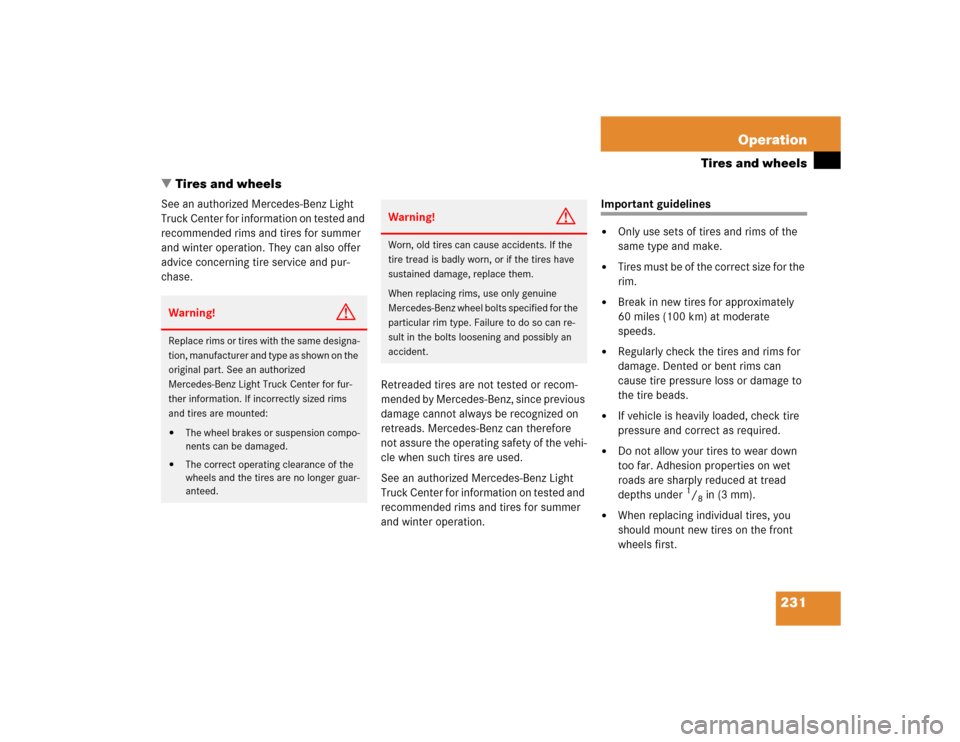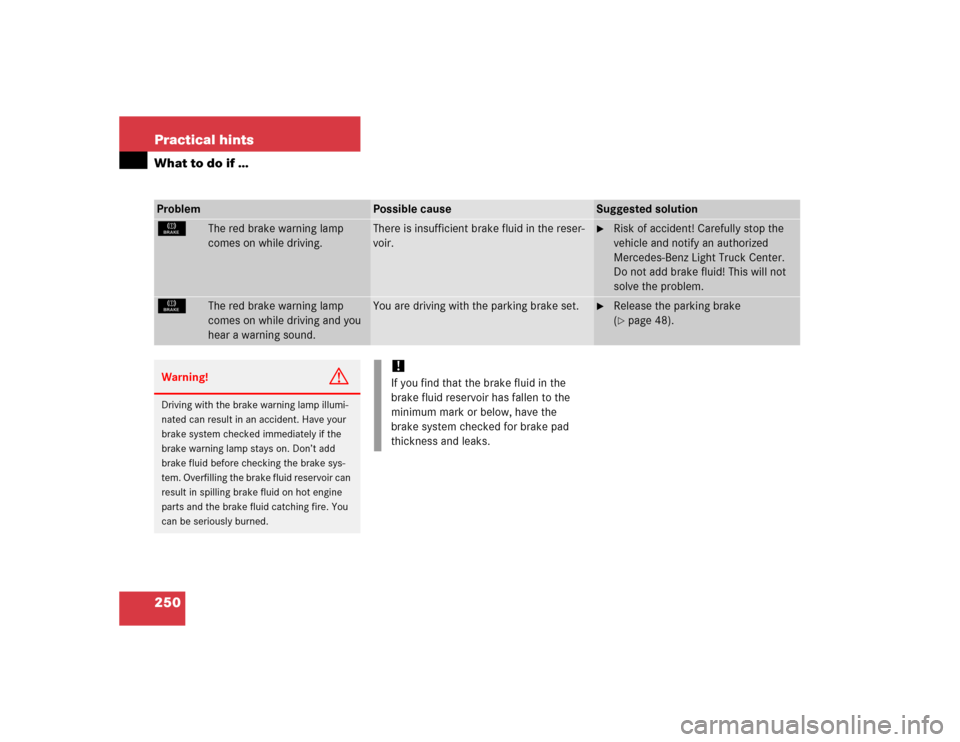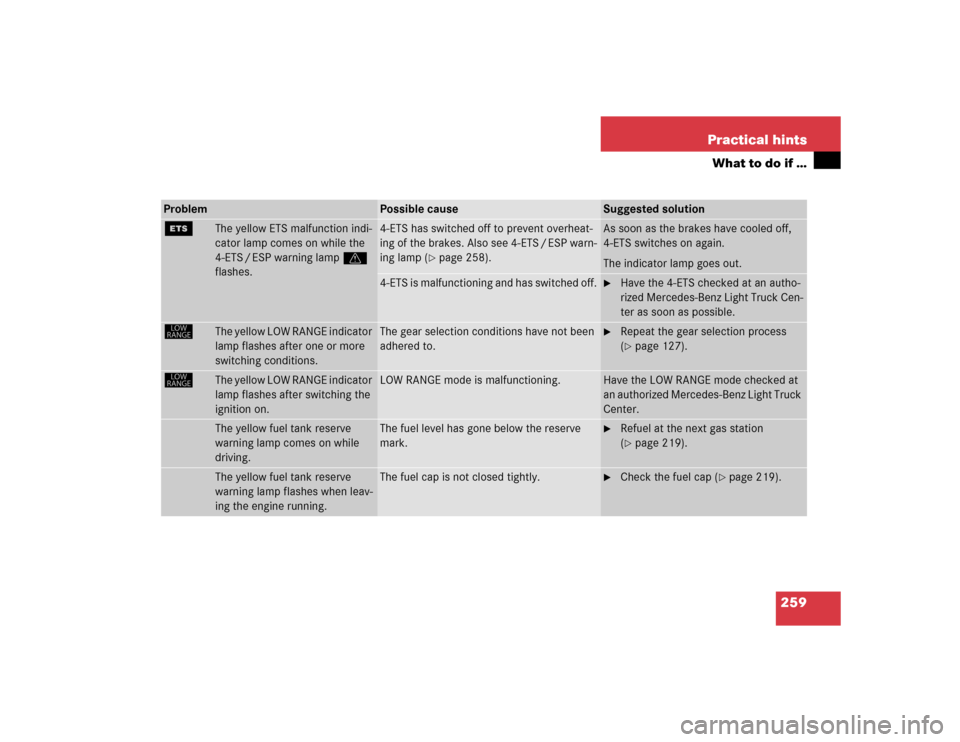Page 216 of 356

214 OperationDriving instructionsTowing a trailer
There are many different laws, including
speed limit restrictions, having to do with
trailer towing. Make sure your rig will be le-
gal, not only for where you reside, but also
for where you will be driving. A good
source for this information can be the po-
lice or local authorities.
Note the following points, when driving
with the trailer:�
In order to gain skill and an under-
standing of the vehicle’s behavior, you
should practice turning, stopping and
backing up in an area which is free from
traffic.
�
Before you start driving check the�
trailer hitch
�
break-away switch
�
safety chains
�
electrical connections
�
lighting and tiresAdjust the mirrors to permit unobstructed
view beyond rear of trailer.
�
If the trailer has electric brakes, start
your vehicle and trailer moving slowly,
and then apply only the trailer brake
controller by hand to make sure the
brakes are working properly.
�
Always secure items in the trailer to
prevent load shifts while driving.
�
When towing a trailer, check occasion-
ally to make sure the load is secure,
and that lighting and trailer brakes (if
so equipped) are functioning properly.
�
Take into consideration that when tow-
ing a trailer, the handling characteris-
tics are different and less stable from
those when operating the vehicle with-
out a trailer.
It is important to avoid sudden maneu-
vers.
�
The vehicle and trailer combination is
heavier, and therefore is limited in ac-
celeration and climbing ability, and re-
quires longer stopping distances.
I t i s m o r e p r o n e t o r e a c t i n g t o s i d e w i n d
gusts, and requires more sensitive
steering input.
�
If possible, do not brake abruptly, but
rather engage the brake slightly at first
to permit the trailer to activate its
brake. Then increase the braking force.!If the trailer should begin to sway, re-
duce the vehicle’s speed and use the
brake controller by hand to straighten
out the vehicle and trailer.
In no case should you attempt to
straighten out the tow vehicle and trail-
er by increasing the speed or over-
steering and stepping on the brakes.
Page 223 of 356

221 Operation
At the gas station
Check regularly and before a long trip�
Open the hood (
�page 222).
1Engine oil level
2Coolant level
3Brake fluid
4Windshield washer system and
headlamp cleaning system*
Engine oil level
For more information on engine oil, see
“Engine oil” (
�page 223).Coolant
For normal replenishing, use water (pota-
ble water quality). For more information,
see “Coolant level” (
�page 227) and see
“Fuels, coolants, lubricants, etc.”
(
�page 312).
Brake fluidWindshield / rear window washer
system and headlamp cleaning
system*
For more information on refilling the reser-
voir, see “Windshield / rear window washer
system and headlamp cleaning system*”
(
�page 230).
Vehicle lighting
Check function and cleanliness. For infor-
mation on replacing light bulbs, see “Re-
placing bulbs” (
�page 274).
For more information, see “Combination
switch” (
�page 107).
Tire inflation pressure
For more information, see “Checking tire
inflation pressure” (
�page 232).
!If you find that the brake fluid in the
brake fluid reservoir has fallen to the
minimum mark or below, have the
brake system checked for brake pad
thickness and leaks immediately. Noti-
fy an authorized Mercedes-Benz Light
Truck Center immediately. Do not add
brake fluid as this will not solve the
problem. For more information, see
“Practical Hints” (
�page 251).
Page 233 of 356

231 Operation
Tires and wheels
�Tires and wheels
See an authorized Mercedes-Benz Light
Truck Center for information on tested and
recommended rims and tires for summer
and winter operation. They can also offer
advice concerning tire service and pur-
chase.
Retreaded tires are not tested or recom-
mended by Mercedes-Benz, since previous
damage cannot always be recognized on
retreads. Mercedes-Benz can therefore
not assure the operating safety of the vehi-
cle when such tires are used.
See an authorized Mercedes-Benz Light
Truck Center for information on tested and
recommended rims and tires for summer
and winter operation.
Important guidelines�
Only use sets of tires and rims of the
same type and make.
�
Tires must be of the correct size for the
rim.
�
Break in new tires for approximately
60 miles (100 km) at moderate
speeds.
�
Regularly check the tires and rims for
damage. Dented or bent rims can
cause tire pressure loss or damage to
the tire beads.
�
If vehicle is heavily loaded, check tire
pressure and correct as required.
�
Do not allow your tires to wear down
too far. Adhesion properties on wet
roads are sharply reduced at tread
depths under
1/8in (3 mm).
�
When replacing individual tires, you
should mount new tires on the front
wheels first.
Warning!
G
Replace rims or tires with the same designa-
tion, manufacturer and type as shown on the
original part. See an authorized
Mercedes-Benz Light Truck Center for fur-
ther information. If incorrectly sized rims
and tires are mounted:�
The wheel brakes or suspension compo-
nents can be damaged.
�
The correct operating clearance of the
wheels and the tires are no longer guar-
anteed.
Warning!
G
Worn, old tires can cause accidents. If the
tire tread is badly worn, or if the tires have
sustained damage, replace them.
When replacing rims, use only genuine
Mercedes-Benz wheel bolts specified for the
particular rim type. Failure to do so can re-
sult in the bolts loosening and possibly an
accident.
Page 250 of 356

248 Practical hintsWhat to do if …Lamps in instrument clusterGeneral information:
If a bulb in the instrument cluster fails to
come on during the bulb self-check when switching on ignition, have it checked and
replaced if necessary.Problem
Possible cause
Suggested solution
-
The yellow ABS malfunction
indicator lamp comes on while
driving.
ABS has detected a malfunction and has
switched off. The BAS, ESP, and 4-ETS are
also switched off.
The brake system is still functioning normally
but without ABS available.
�
Continue driving with added caution.
Wheels may lock during hard braking
reducing steering capability.
�
Have the system checked at an autho-
rized Mercedes-Benz Light Truck Cen-
ter as soon as possible.
Failure to follow these instructions in-
creases the risk of an accident.
The charging voltage has fallen below
10 volts. The ABS has switched off.
When the voltage is above this value
again, the ABS is operational again.�
If necessary, have the generator
(alternator) and the battery checked.
Page 252 of 356

250 Practical hintsWhat to do if …Problem
Possible cause
Suggested solution
É
The red brake warning lamp
comes on while driving.
There is insufficient brake fluid in the reser-
voir.
�
Risk of accident! Carefully stop the
vehicle and notify an authorized
Mercedes-Benz Light Truck Center.
Do not add brake fluid! This will not
solve the problem.
É
The red brake warning lamp
comes on while driving and you
hear a warning sound.
You are driving with the parking brake set.
�
Release the parking brake
(�page 48).
Warning!
G
Driving with the brake warning lamp illumi-
nated can result in an accident. Have your
brake system checked immediately if the
brake warning lamp stays on. Don’t add
brake fluid before checking the brake sys-
tem. Overfilling the brake fluid reservoir can
result in spilling brake fluid on hot engine
parts and the brake fluid catching fire. You
can be seriously burned.
!If you find that the brake fluid in the
brake fluid reservoir has fallen to the
minimum mark or below, have the
brake system checked for brake pad
thickness and leaks.
Page 253 of 356
251 Practical hints
What to do if …
Problem
Possible cause
Suggested solution
É
-
The red brake warning lamp
comes on in addition to the yel-
low ABS indicator lamp and you
hear a warning sound.
There is a malfunction in the Electronic Brake
Proportioning (EBP) system.
The enhanced braking effect is not available.
�
Have the system checked immediate-
ly at an authorized Mercedes-Benz
Light Truck Center.
Failure to follow these instructions in-
creases the risk of accidents.
¿
The yellow BAS / ESP indicator
lamp comes on while driving.
The self-diagnosis has not been completed.
The BAS / ESP indicator lamp will go out
after driving a short distance at more
than approx.12 mph (20 km / h).
Page 256 of 356
254 Practical hintsWhat to do if …Problem
Possible cause
Suggested solution
?
(USA only)
±
(Canada only)
The yellow engine malfunction
indicator lamp comes on while
driving.
There is a malfunction of:�
The fuel management
system
�
The ignition system
�
The emission control
system
�
Systems which affect
emissions
Such malfunctions may result
in excessive emissions values
and may switch the engine to
its limp-home (emergency op-
eration) mode.
�
Have the vehicle checked as soon as
possible by an authorized
Mercedes-Benz Light Truck Center.
An on-board diagnostic connector is
used by the service station to link the
vehicle to the shop diagnostics sys-
tem. It allows the accurate identifica-
tion of system malfunctions through
the readout of diagnostic trouble
codes. It is located in the front left area
of the footwell next to the parking
brake pedal.
Page 261 of 356

259 Practical hints
What to do if …
Problem
Possible cause
Suggested solution
{
The yellow ETS malfunction indi-
cator lamp comes on while the
4-ETS / ESP warning lampv
flashes.
4-ETS has switched off to prevent overheat-
ing of the brakes. Also see 4-ETS / ESP warn-
ing lamp (
�page 258).
As soon as the brakes have cooled off,
4-ETS switches on again.
The indicator lamp goes out.
4-ETS is malfunctioning and has switched off.
�
Have the 4-ETS checked at an autho-
rized Mercedes-Benz Light Truck Cen-
ter as soon as possible.
ê
The yellow LOW RANGE indicator
lamp flashes after one or more
switching conditions.
The gear selection conditions have not been
adhered to.
�
Repeat the gear selection process
(�page 127).
ê
The yellow LOW RANGE indicator
lamp flashes after switching the
ignition on.
LOW RANGE mode is malfunctioning.
Have the LOW RANGE mode checked at
an authorized Mercedes-Benz Light Truck
Center.
The yellow fuel tank reserve
warning lamp comes on while
driving.
The fuel level has gone below the reserve
mark.
�
Refuel at the next gas station
(�page 219).
The yellow fuel tank reserve
warning lamp flashes when leav-
ing the engine running.
The fuel cap is not closed tightly.
�
Check the fuel cap (
�page 219).